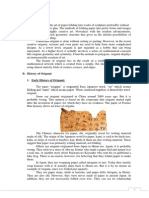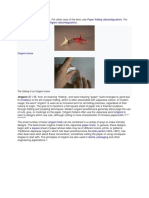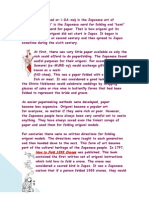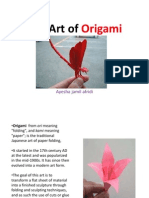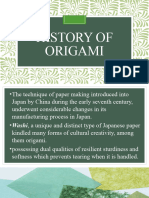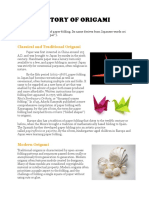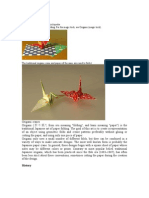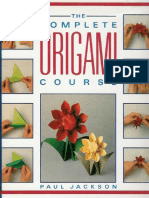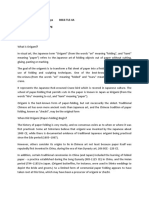0% found this document useful (0 votes)
22 views1 pageOrigami
Origami is the Japanese art of paper folding, aiming to transform a flat square sheet of paper into a sculpture through folding techniques, typically without cuts or glue. It is categorized into ceremonial origami (origata) and recreational origami, with the latter being more widely recognized. The principles of origami extend beyond art into practical applications in engineering and design.
Uploaded by
Amalia FuentesCopyright
© © All Rights Reserved
We take content rights seriously. If you suspect this is your content, claim it here.
Available Formats
Download as DOCX, PDF, TXT or read online on Scribd
0% found this document useful (0 votes)
22 views1 pageOrigami
Origami is the Japanese art of paper folding, aiming to transform a flat square sheet of paper into a sculpture through folding techniques, typically without cuts or glue. It is categorized into ceremonial origami (origata) and recreational origami, with the latter being more widely recognized. The principles of origami extend beyond art into practical applications in engineering and design.
Uploaded by
Amalia FuentesCopyright
© © All Rights Reserved
We take content rights seriously. If you suspect this is your content, claim it here.
Available Formats
Download as DOCX, PDF, TXT or read online on Scribd
/ 1
